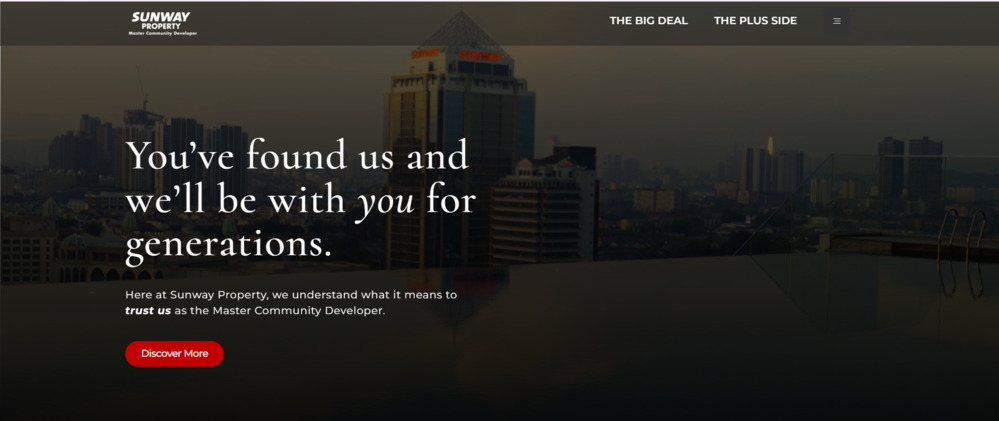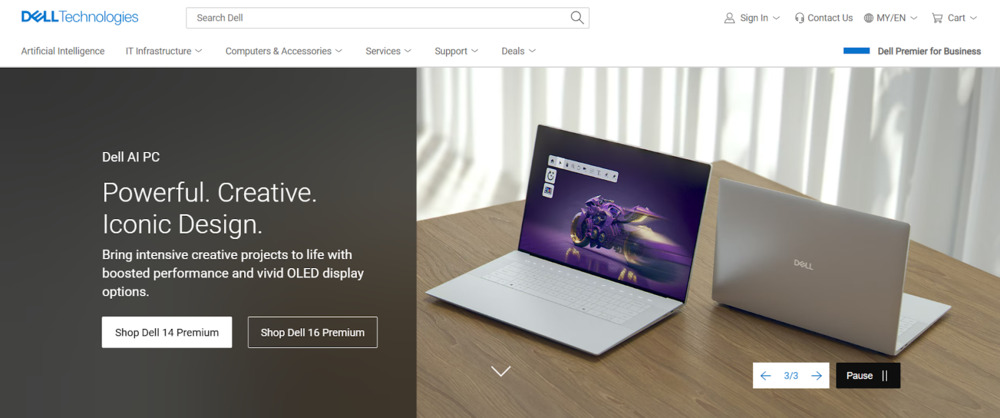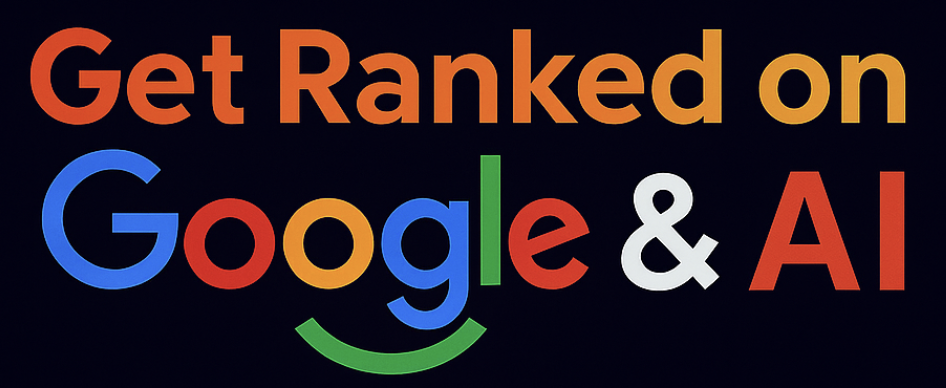Malaysia’s business landscape speaks in multiple tongues, English dominates corporate corridors, whilst Bahasa Malaysia connects with government sectors and local enterprises.
Getting your localising ad campaigns right means understanding which language resonates with which audience, and when to deploy each for maximum engagement.
The difference between a high-converting campaign and wasted ad spend often comes down to one crucial factor: speaking your audience’s preferred language.
Let’s explore how to optimise your B2B campaigns by strategically using English and BM to reach the right decision-makers.
Table of Contents
Speak Their Language: How to Use Preferences to Unlock Local Marketing Success
Before launching any campaign, you need solid market research on language preferences within your target audience.
Different industries, regions, and company sizes in Malaysia have distinct linguistic patterns.
English typically dominates in:
- Multinational corporations
- Technology and IT sectors
- Professional services (legal, consulting, finance)
- Manufacturing exporters
- Kuala Lumpur and Penang business districts
Bahasa Malaysia connects better with:
- Government-linked companies (GLCs)
- SMEs in suburban and rural areas
- Construction and property development
- Local retail and F&B chains
- East Malaysia business communities
A 2023 study by the Malaysian Digital Association revealed that whilst 67% of business professionals use English for corporate communication, local audiences in specific sectors still prefer BM for initial business contact.
This insight transforms your entire digital marketing approach.

Take the example of Sunway Group’s B2B property marketing. They run separate campaigns like English ads target international investors and corporate buyers, whilst BM campaigns focus on local contractors and domestic investors.
This dual-language strategy helped them achieve 43% higher conversion rates compared to their previous English-only approach.
Understanding customer demographics goes beyond just location. Job titles matter too. C-suite executives in Malaysian companies often prefer English, whilst procurement managers and operations heads may respond better to BM, particularly in traditional industries.
Adapting Your Message: Cultural Nuances in B2B Communication
Marketing localisation involves far more than running your English copy through Google Translate. The communication style, tone, and messaging structure differ significantly between languages.
English B2B copy in Malaysia tends to be direct and results-focused:
- “Increase operational efficiency by 4 times higher”
- “Cut costs whilst maintaining quality”
- “Scale your business with proven solutions”
BM business communication adopts a slightly more formal, relationship-oriented approach:
- Emphasising partnership and collaboration
- Using respectful terms and proper business register
- Highlighting long-term relationships over quick wins

When global tech brands roll out SME campaigns in Malaysia, English ads often highlight technical specifications and ROI calculations.
In contrast, Malay-language versions tend to stress values like perkongsian jangka panjang (long-term partnership) and sokongan tempatan (local support), which resonate more strongly with local communities.
Cultural sensitivities play a crucial role too. References that work brilliantly in English might fall flat or even offend in BM.
A multi language website ensures your entire digital presence reflects these nuances, not just your ads.
Key Localisation Elements
When tailoring ad creatives for different audiences, the nuances in tone, calls to action, and value propositions make all the difference.
Below are some key localisation elements that highlight how English and BM approaches can diverge in style and impact.
| Element | English Approach | BM Approach |
| Tone | Professional, direct | Respectful, collaborative |
| CTAs | Action-oriented (“Get started now”) | Consultative (“Mari berbincang”) |
| Value Props | Data-driven, ROI-focused | Trust-building, relationship-focused |
| Testimonials | Results and metrics | Long-term partnerships |
Beyond Translation: Structuring Your Campaigns for True Multi-Language Success
Running mixed-language campaigns within the same ad group creates chaos. Separate campaigns by language give you clarity, control, and actionable insights.
Campaign structure best practices:
1. Separate Campaigns by Language
- Create distinct English and BM campaigns for independent budget control.
- Example: English (60%) for MNCs, BM (40%) for local SMEs.
2. Localised Keyword Research
- Avoid direct translations, search intent differs by language.
- “Accounting software” ≠ “Perisian perakaunan” (different intent).
- English = purchase-ready users; BM = early research stage.
3. Optimise by Language Performance
- Tailor bids, ad schedules, and automation rules per campaign.
- Track CTR, CPC, and conversions separately.
4. Align Audience Segmentation
- Language reflects audience type:
- Company size: Enterprises vs SMEs
- Industry: Tech, finance, retail, etc.
- Region: Urban vs suburban markets
- Role: Decision-makers vs end users
5. Maintain Terminology Consistency
- Use a glossary for key terms (e.g., “cloud solutions”).
- Decide if BM campaigns use “awan” or “cloud” (many prefer “cloud”).
6. Match Landing Page Language
- Ensure ad language matches landing page language.
- BM users on English pages can reduce conversions by ≈58%.
- Proper localisation maintains trust and improves conversion rates.
Google Ads campaigns benefit enormously from this separation. On the other hand. proper content localisation ensures seamless user experience from click to conversion.
Creating Compelling Ad Copy and Digital Assets
Localised marketing campaigns require fresh creative thinking for each language, going beyond word-for-word translation.
Character count constraints differ between languages. English ad headlines might fit comfortably within Google’s 30-character limit, whilst BM translations could exceed it due to longer word forms.
This forces you to adapt messaging, which often results in stronger, more focused copy.
Visual elements matter in local marketing. Stock photos of Western businesspeople might work for English campaigns targeting international audiences, but BM campaigns perform better with recognisable landmarks and faces that reflect Malaysia’s diversity.

Maybank’s B2B banking campaigns demonstrate this brilliantly. Their English ads feature modern office settings and digital interfaces.
BM campaigns show local business environments like kopitiam meetings, warehouse operations, and retail shop settings. This visual relevance drives 29% higher click-through rates.
Social media campaigns need language-appropriate advertising formats.
LinkedIn campaigns in English reach corporate decision-makers, whilst Facebook BM campaigns might target SME owners who engage more on that platform.
Consider these creative adaptations:
a. CTAs that convert:
- English: “Request a demo” → Direct, action-focused
- BM: “Dapatkan maklumat lanjut” (Get more information) → Consultative approach
b. Headlines that hook:
- English: “Transform Your Supply Chain in 90 Days”
- BM: “Tingkatkan Kecekapan Pengurusan Inventori Anda” (Improve Your Inventory Management Efficiency)
Video content requires special attention. English voiceovers suit corporate training and product demos, whilst BM voiceovers with subtitles work well for testimonials and case studies.
Some companies even use local celebrities or industry experts to boost brand awareness in specific language segments.
Influencer marketing follows similar patterns. English-speaking business influencers reach different audiences than BM content creators, even within the same industry.
Stop Guessing: The Metrics for Language Campaign Success
Data drives decisions. Track these metrics separately for English and BM campaigns to understand what truly works.
Essential KPIs by language:
- Conversion Rate : Shows which language brings quality leads.
- English: higher lead volume.
- BM: often better-qualified prospects (varies by industry).
- Measure cost per lead, not just count.
- Click-Through Rate (CTR) : Reveals message relevance.
- Example: English 3.2% vs BM 1.1% = translation or cultural gap.
- Email Open Rate : Indicates audience connection.
- English emails average 23%, while BM can reach 31%.
- Engagement & Behaviour : Analyse bounce rate, time on page, and conversion paths by language in Google Analytics.
- Feedback Loop & Optimisation
- Conduct weekly reviews to identify trends:
- Which BM phrases boost engagement?
- Do English campaigns convert better on mobile or desktop?
- What seasonal or cultural shifts affect results?
- Conduct weekly reviews to identify trends:
- Regional Differences
- Local dialects and cultural nuances impact performance.
- Example: Johor vs Sabah BM campaigns may require different messaging.
Optimising and Scaling: Making Your Investment Work Harder
Once you’ve gathered performance data, optimise ruthlessly. Double down on what works, fix what doesn’t, and test continuously.
A/B testing becomes powerful with language variables:
- Test different cultural references in BM ads
- Experiment with formal vs casual tone in English copy
- Try various CTA formulations
- Adjust brand consistency elements
The beauty of separate campaigns lies in independent optimisation. Scale your high-performing English campaign without affecting BM testing, and vice versa.
LinkedIn Ads campaigns in English might excel for reaching corporate buyers, whilst Facebook Ads in BM could dominate for local SME targeting. Scale each on its preferred platform.
Global expansion starts with getting local marketing right first.
Many Malaysian companies perfect their dual-language approach domestically before expanding to global markets with similar linguistic diversity (like Singapore’s English-Mandarin split or South Africa’s multi-language landscape).
Consider international holidays and local celebrations in your campaign calendar.
Chinese New Year, Hari Raya, and Deepavali require culturally appropriate creative in both languages, though the approach differs.
Search engine optimisation (SEO) principles apply to paid campaigns too. Strong SEO Services complement your paid efforts, creating consistent marketing messaging across organic and paid channels.
Time to Act: Implement and Maximise Your Local Impact
Successful B2B advertising in Malaysia requires strategic language deployment, cultural awareness, and continuous optimisation.
The companies winning today run sophisticated dual-language campaigns that respect audience preferences whilst maintaining brand perception across all touchpoints.
Starting your localisation journey feels overwhelming, but you can begin small. Test one BM campaign alongside your English efforts. Measure, learn, and scale what works.
Remember: localisation creates competitive advantage. Whilst your competitors blast generic English ads at everyone, you’re building emotional connection through language that truly resonates.
Unlock B2B Conversions. Contact Newnormz to start Building your optimised English & BM campaign strategy now.






